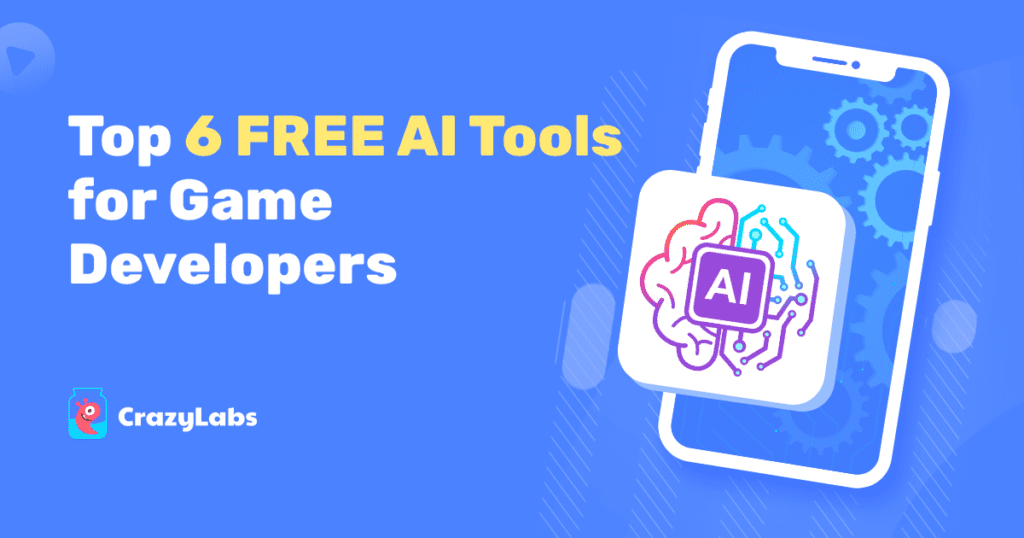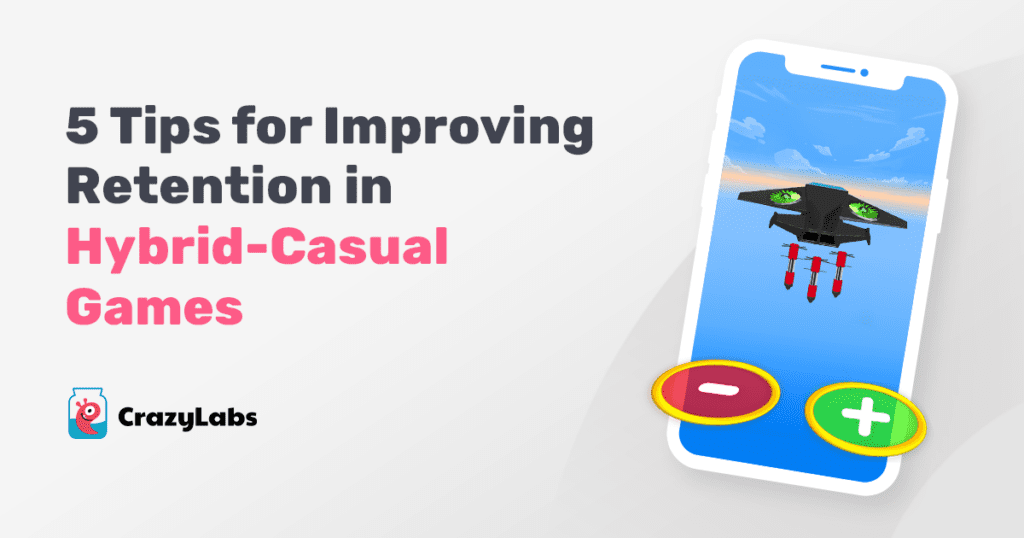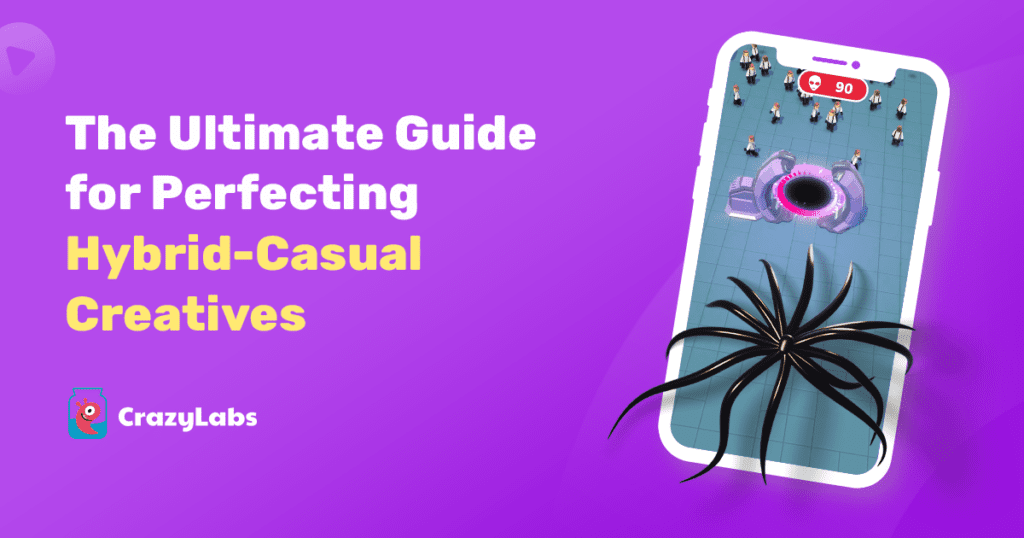In our new series, Meet The Developer, we speak with the developers behind CrazyLabs’ leading games and discover their best practices and unique insights.
In this edition, we meet Mario Royston of Weloadin, the studio behind some of CrazyLabs’ games including Dessert DIY and Rubber Band Cutting ASMR, which cumulatively generated over 100 million downloads. Below, Mario shares his top tips for coming up with brilliant game ideas and other unique insights.
What are your best tips for coming up with game ideas?
Tracking Top Charts: In our studio, we have a habit of playing the top charted games, whether it’s the Top 50 or the Top 100. This helps us analyze the popular game genres in the market. We use Sensor Tower to track game performance across different regions as well.
Case Study: We conduct case studies on successful games to identify the core factors that contribute to their success. These factors could be related to art, gameplay, reward systems, or game progression. By understanding the strengths and weaknesses of hit games, we can determine which elements to incorporate into our own games and what to avoid. This allows us to create games that align with what people like and dislike.
Social Media Trends: We keep track of social media and Google trends to identify what is popular in the gaming industry, specifically in the hyper casual/hybrid casual genre. By following relevant hashtags, we receive suggestions that are related to hyper casual games. When we come across ideas that have the potential to be turned into games, we consider the successful factors observed in top charted games. By implementing these factors alongside our own ideas, we aim to create core mechanics that are addictive, fun, and satisfying to play repeatedly.
Relatable Ideas: When developing hyper casual games, we prioritize straightforward and relatable concepts. Our studio initially focused on premium mobile games, where player acceptance of innovative ideas was higher due to the niche audience consisting mostly of gamers seeking something new. However, in hyper casual games, our target audience is broader, including non-gamers. We blend relatable ideas with experiences people may not have a chance to try in real life or nostalgic experiences. For instance, the soap-cutting trend inspired a game that provides a satisfying ASMR-like feeling. This allows people familiar with the trend to enjoy the game, while others can experience it without actually cutting soap.
Creatives Adaptability: When we come up with a strong idea, we consider its potential to adapt to different creative strategies in the long run. Relying solely on a single creative approach that initially performs well is not sufficient. As we progress beyond the CPI phase and acquire a quality user base, the CPI tends to increase. Therefore, it becomes crucial to develop additional creatives that align with the current market situation and trends.
For example, in our game “Dessert DIY,” we offer players the option to create desserts using any ingredient they prefer. To keep up with trends and maintain profitability, we incorporated popular elements such as Fidget Pop, Dragon Eggs (inspired by “House of Dragon”), and horror-themed desserts with skulls and bones (inspired by “Wednesday”). By adapting our ideas to different CPI strategies over time, we can ensure that our game remains profitable for an extended period.
By continuously testing and monitoring the performance of our game, we can make necessary adjustments and introduce creative elements that resonate with the evolving market trends. This adaptability allows us to sustain the success of our game and attract quality users, even as the cost per install increases in the long run
What are the 3 – 5 best game development software that developers should leverage?
Adobe Illustrator: Adobe Illustrator is a powerful graphic design tool that is often used for creating game UI elements, posters, screenshots, and other visual assets. Its versatile features and vector-based approach make it ideal for designing high-quality graphics.
Unity Engine: Unity Engine is a popular game development engine used for creating mobile games. It offers compatibility with various software development kits (SDKs) and plugins, making it a versatile choice for mobile game development. Unity allows developers to create and optimize games for multiple platforms, and it provides tools and shaders to enhance the visual aspects of the game. Additionally, Unity’s framework allows for rapid prototyping, enabling efficient development processes.
Adobe Premiere Pro and Typecast: Adobe Premiere Pro is a professional video editing software used for editing creative videos in game development. It provides advanced editing features, effects, and transitions to create visually appealing game trailers or promotional videos. Typecast, on the other hand, is used for voice-overs and adding captions to the videos. By utilizing these tools effectively, developers can enhance the quality of their video content and potentially reduce CPI by delivering engaging promotional material.
Blender: Blender is a powerful 3D modeling and animation software widely used in game development. It offers a comprehensive set of tools for creating 3D models, textures, and animations. Developers can use Blender to design characters, objects, and environments for their games, bringing them to life with intricate details and realistic motion. Additionally, Blender supports integration with motion capture apps like Move AI, enabling developers to capture real-world movements and apply them to their game characters.
By leveraging these software tools, game developers can enhance their workflow efficiency, create visually stunning graphics and animations, and deliver engaging promotional material, ultimately contributing to the success of their games.
What are your top 3 most important tips that have contributed to your success as a developer?
Patience is a crucial virtue that game developers need to cultivate. It’s important to trust in the hard work you’ve put in and allow situations to unfold naturally. By being patient, you can reap the benefits when the time is right.
Making the right decisions at the right time is essential. Many game studios make mistakes in their decision-making process, and it’s important to learn from those experiences. Holding onto a game for too long, even if you’ve invested significant time and effort, may not be beneficial. Being able to accept when a game is not working out and moving on to the next project can help you refocus your dedication and confidence.
Adapting to the market and trends is crucial for game developers. Whether you’re creating premium games, hyper-casual games, hybrid casual games, or PC and console games, it’s important to think like a game developer who can adapt to different markets. Embracing the core ideas of game design and development while being open to exploring new avenues will broaden your horizons and increase your chances of success.
Stepping out of your comfort zone and exploring new possibilities is vital. Growth and innovation often come from pushing boundaries and trying new things. Don’t be afraid to take risks, experiment with different game ideas, and explore uncharted territories. This mindset of exploration and adaptation will keep you on the path of growth and success in the dynamic world of game development.


